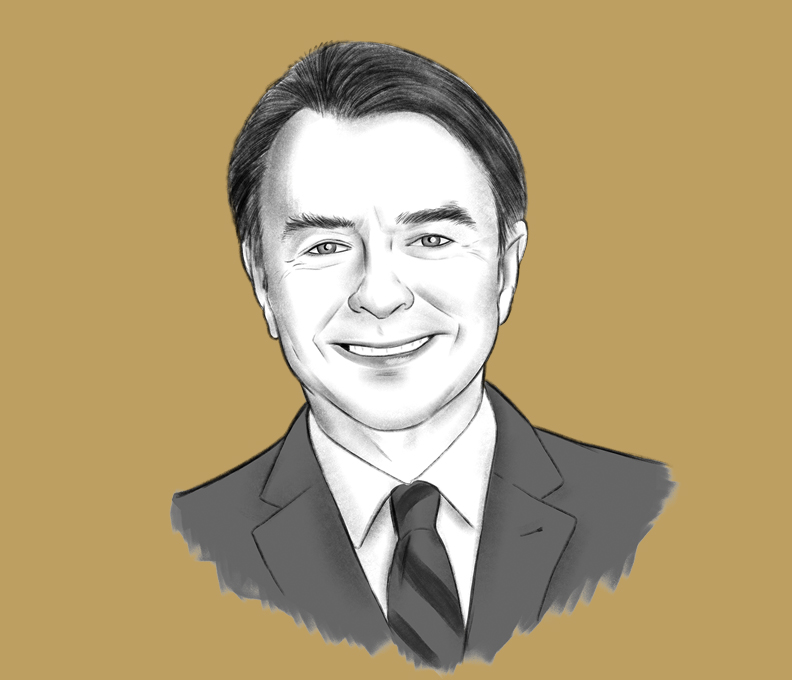Is Supersonic Air Travel Making a Comeback?
Twenty years after the last flight of Concorde, a host of start-ups are betting on a new golden age of supersonic air travel. But some of the same challenges remain
March 7, 2023
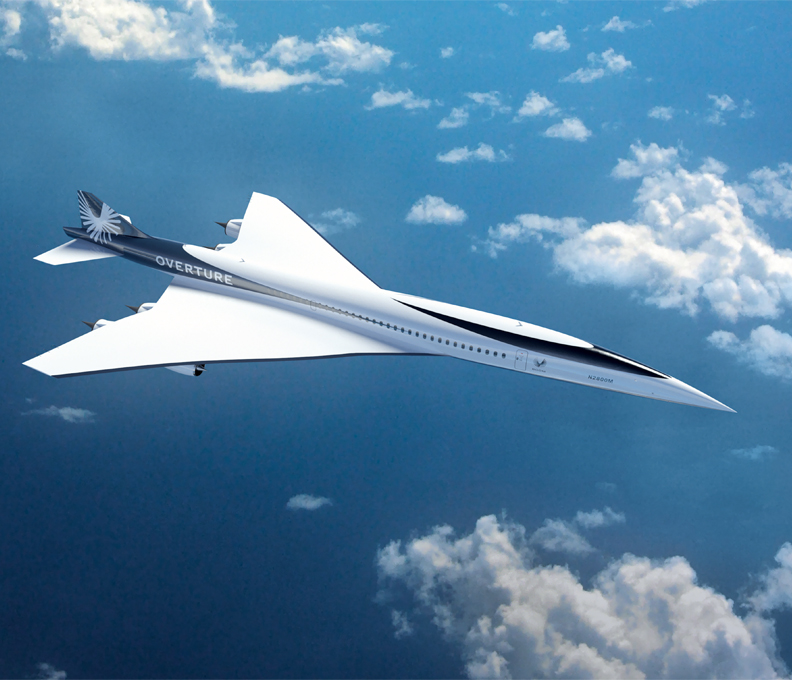
Prototype of Boom’s Overture supersonic aircraft / Photo: Courtesy of Boom Supersonic
We once had supersonic air travel—and then we didn’t. The last flight of the sleek “beautiful bird,” as Concorde was known to its admirers, took place in 2003. That was the end of more than two decades of flying at twice the speed of sound, with passengers paying a premium to be served caviar and champagne while crossing the Atlantic Ocean in just three hours.
Concorde (calling it “the Concorde” was a sign you’d never flown it) was promoted as the aircraft that would halve the size of the world, bringing Tokyo within seven hours of Paris and making New York to London a day trip. But the plane turned into an expensive and unrealized dream for France and the U.K., which signed a treaty in 1962 to collaborate on the development of the project. Only 20 aircraft were built, including six prototypes and developmental models. Concorde certainly captured the world’s attention, though, with 74 options placed by airlines including Pan Am, Continental, TWA, American Airlines, Eastern, United and Braniff, as well as Qantas, Air India, Air Canada and Lufthansa. But not a single airline ultimately bought the plane, and the British and French governments were compelled to subsidize its use on their flag carriers.
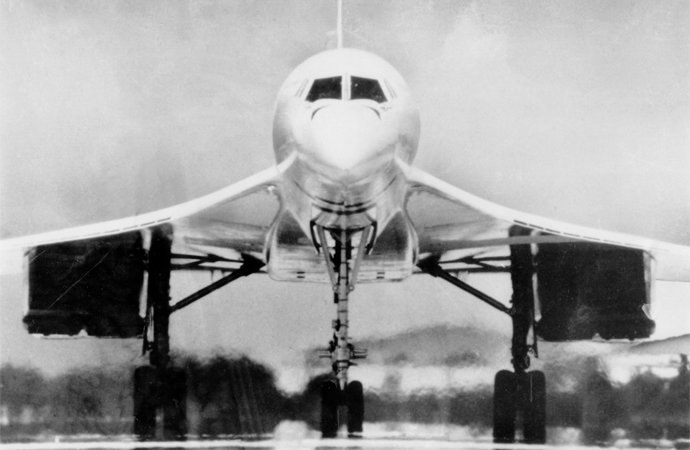
Concorde at take-off / Photo: Courtesy of SSPL/Getty Images
Supersonic passenger service began on January 21, 1976. Among the initial flights were a British Airways one from London to Bahrain and an Air France from Paris to Rio de Janeiro. Eventually Concorde flights settled into a pattern of commercial service over the Atlantic—between JFK and Dulles in the U.S. and Heathrow and Charles de Gaulle airports in Europe. Because of the sonic boom it created, Concorde was only allowed to fly subsonically over land, which limited its route choices.
But once the planes were airborne, Concorde became the sexiest way to fly—if you could afford it. It was also the fastest, cruising at Mach two, twice the speed of sound, or one mile every three seconds. And at 60,000 feet, it allowed passengers to see the curvature of the earth. You didn’t fly Concorde for comfort. You flew it for S&S: speed and status. The seating was essentially a cramped two-by-two coach configuration in a narrow aircraft. But meals were cooked onboard and served on fine china. And if you were flying west across the Atlantic, you technically arrived before you left.
The plane was a showstopper, from the retractable nose and delta wings to the passengers themselves: movie stars, investment bankers, CEOs and world leaders ranging from Henry Kissinger to Queen Elizabeth (her favorite seat, not surprisingly, was 1A). The sky-high fares ran as much as $12,000 round trip. For that you got to fly at 1,350 miles per hour as the aircraft burned more than 25,000 liters of fuel every 60 minutes.
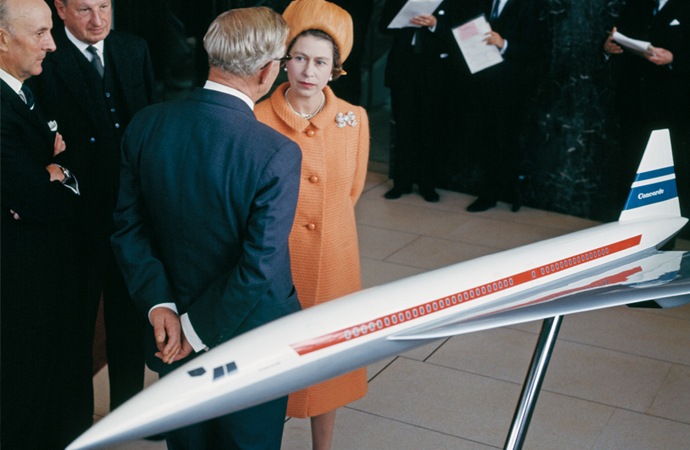
Queen Elizabeth II with a Concorde model at the British Aircraft Corporation, Bristol, U.K., 1966 / Photo: George Freston/Fox Photos/Getty Images
But that festive, celebratory mood came to a tragic end on July 25, 2000. One hundred and thirteen people died when an Air France Concorde fell out of the sky soon after takeoff from Charles de Gaulle Airport outside Paris and smashed into a small hotel.
French authorities accused Continental Airlines of playing a key role. They charged the U.S. carrier with manslaughter, claiming that a 16-inch piece of metal during the takeoff of a Continental DC-10 fell off onto the runway. When the Concorde then took off, French authorities said that metal piece punctured a tire that rocketed a chunk of rubber into one of the plane’s gas tanks, which caught fire. Continental was convicted by a French court. But an investigation I did for NBC News discovered a host of other contributing factors, ranging from a missing key piece of equipment on the ill-fated plane and defective tires to overloaded baggage and overfilled fuel tanks. And we had four separate, independent eyewitnesses who saw the same thing from four separate vantage points: the plane already smoking before it hit that piece of metal. Continental Airlines then appealed the verdict, and with much of the evidence we provided, the conviction was overturned.
After a 16-month grounding during which modifications to the fuel tanks were made, along with newly strengthened tires, the plane flew again. But in 2003, the fleet was permanently grounded.
The dream of supersonic travel, though, hasn’t died. A spate of start-ups in recent years has promised passengers a supersonic return to the skies, possibly by the end of this decade. Their game plan is the same as the one when Concorde was developed in the 1960s: Passengers will be able to hop a plane, break the sound barrier, view the earth’s curvature and arrive at their destination in half the previous flight time.
But some of the same challenges remain. Skeptics point out the difficulty in getting governments to lift bans on flights over land when there is a sonic boom. Also, is it viable to return to fuel-intensive flights at a time of increasing environmental concern? “Concorde burned a lot of fuel and it polluted the upper levels of the atmosphere,” says University of Dayton professor and aviation historian Janet Bednarek.
Twenty years later, the drumbeat for a return to supersonic has been quickening. The company making the biggest noise is Boom Supersonic, based in Colorado. In 2021, United Airlines announced plans to buy 15 of Boom’s supersonic Overture planes, and in August American Airlines placed an order for 20 planes with an option for 40 more. The proposed aircraft would fly 65 to 80 passengers in an all-business-class cabin. The plane would hit Mach 1.7, below Concorde’s top speed of Mach 2.04. Boom founder and CEO Blake Scholl, formerly with Amazon, expects that ticket prices would be about the same as current business class fares and that the planes will use only renewable energy.
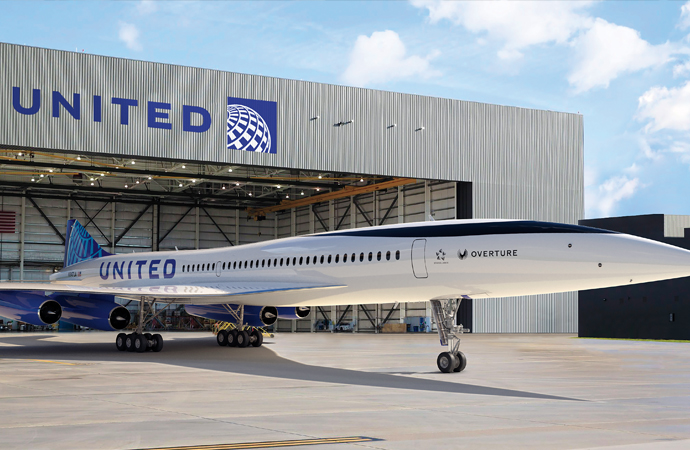
Rendering of a United Airlines Boom aircraft / Photo: Courtesy of Boom Supersonic
But not long after the American Airlines announcement, Boom hit a major speed bump. The company, which had been planning to build an assembly and test facility in North Carolina, didn’t have an engine for the plane or a manufacturer for the engine. Rolls-Royce, which had built Concorde engines and had been working with Boom for two years, declined to renew the agreement, saying the company “has determined that the commercial aviation supersonic market is not currently a priority for us.” In December, however, Boom announced plans to manufacture Symphony, an engine to be developed in partnership with Florida Turbine Technologies, GE Additive and StandardAero. According to Boom, the new engine will run at net-zero carbon and fly relatively quietly for a supersonic jet.
Another company in the supersonic category is taking a different approach. Spike Aerospace, based in Boston, is developing supersonic business jets for the corporate market. Founder and CEO Vik Kachoria, whose previous career in technology and finance included stints at NASA Marshall Space Flight Center, acknowledges the challenges of the path back to supersonic. “There are going to be a lot of start-ups and a lot of failures. But Spike is alive and well,” he says.
Instead of windows, the Spike supersonic model would have expansive, high-definition screens offering panoramic views. The design also calls for a top speed of Mach 1.6, which would have a lower noise impact than Concorde.
Indeed, solving the noise issue could give a big boost to supersonic travel, opening the possibility of overland routes and dozens of commercial long-haul flights. It’s not just the propulsion system that remains a challenge, but also the sonic boom. In the 1960s, supersonic test flights shattered windows wherever the plane flew, which led to the overland flight ban. NASA has been working with Lockheed Martin on a reduced-noise experimental plane that might someday cut the current flying time between Los Angeles and New York City in half.
So when will the next supersonic plane be airborne? Most industry observers are estimating 2029.
Then there’s the subject of fuel consumption. A 2022 study by The International Council on Clean Transportation concluded that supersonic jets would burn seven to nine times as much fuel per passenger as subsonic versions. The organization’s aviation program director, Dan Rutherford, acknowledges Boom’s pledge to use sustainable fuel but notes that the supply is limited and the current cost is two to five times more than fossil jet fuel. “Even before considering climate impacts, that’s a huge fuel bill for airlines to absorb,” he says. Despite these obstacles, airline consultant Craig Jenks says he’s not surprised to see companies such as United and American signing up for planes. “Commercial aviation has not leveraged new technologies the way other industries have,” he says. “If there is even a glimmer of hope about some of these technological breakthroughs, they don’t want to miss out.”



